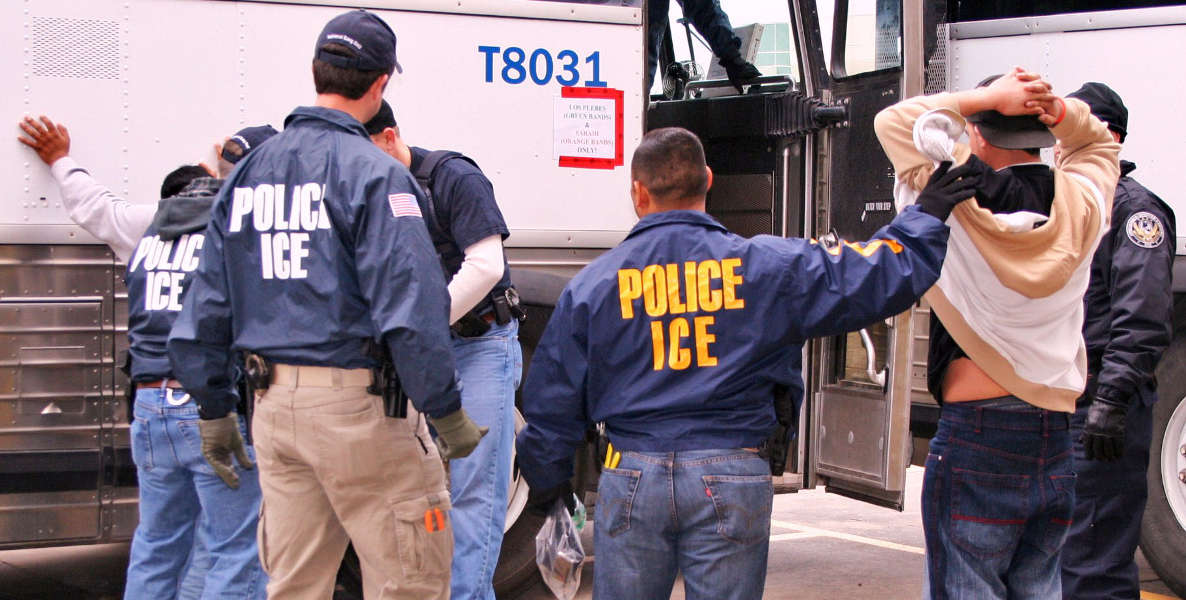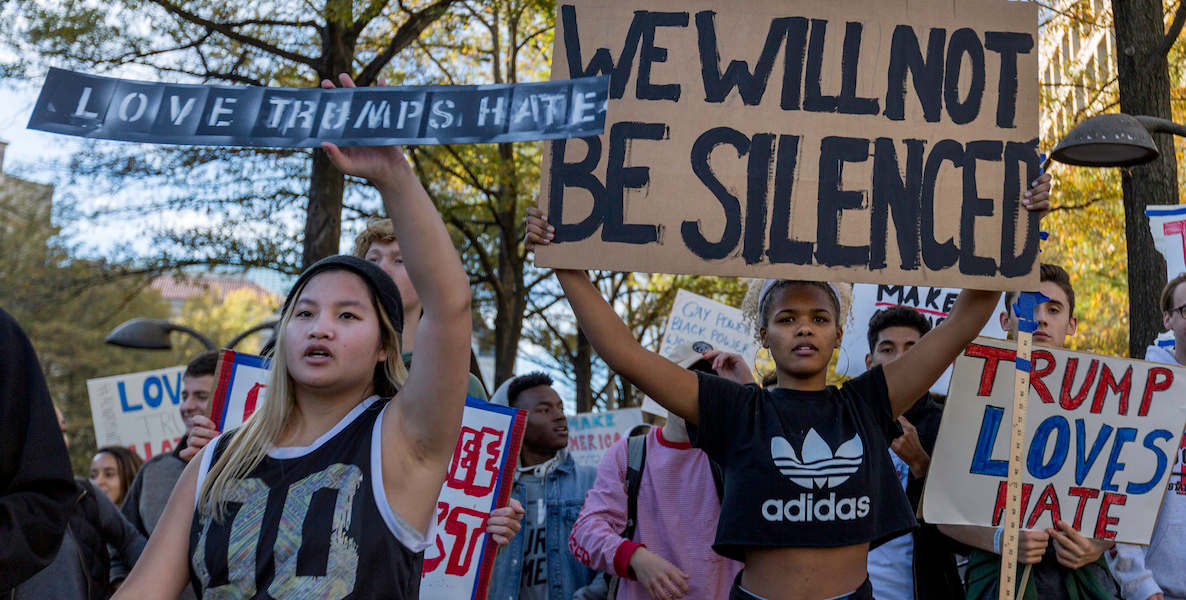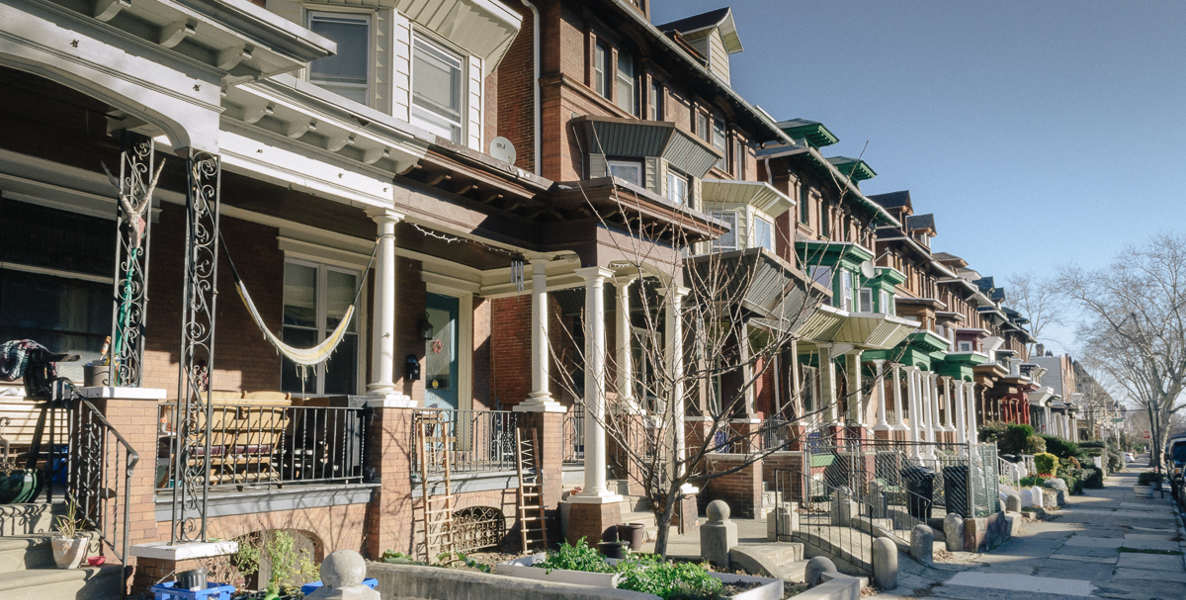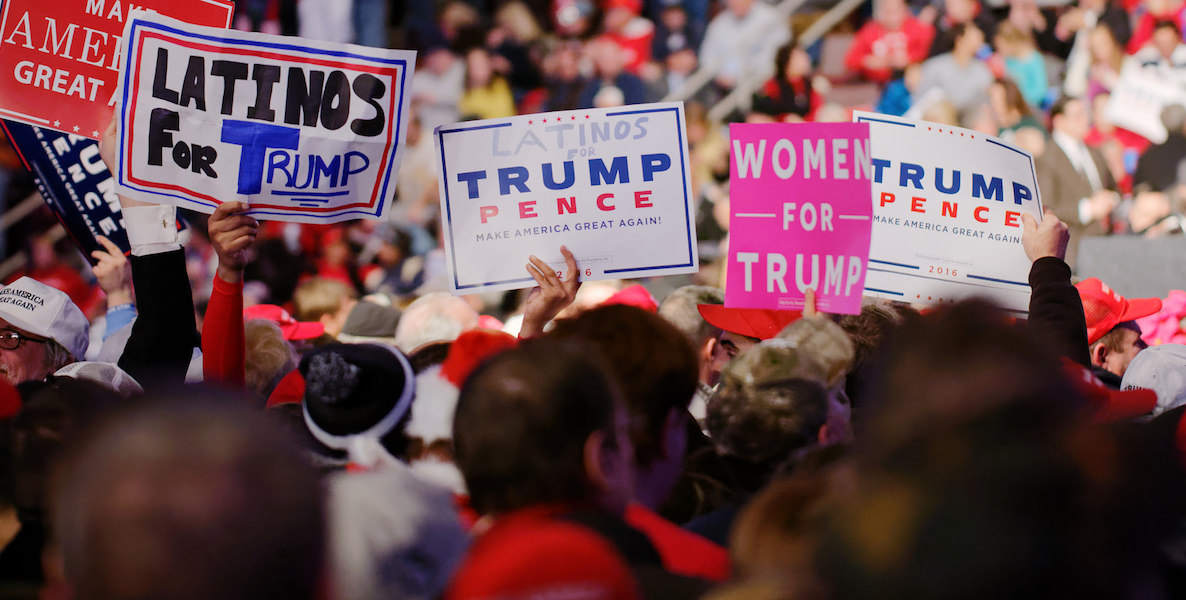It was an election full of surprises, but perhaps the biggest one comes when crunching the voting numbers. Although Trump ran on a platform hostile to women’s reproductive rights, and despite a personal history of verbal and physical assaults on women, he won a majority of white women voters. Further, in spite of the racial violence at his campaign rallies, the raw appeals to white nationalism and racial resentment, and the vow to crack down on communities of color, Trump managed to salvage a small, yet sizable, minority of the African-American male vote.
What is going on here, and why do some people seem to vote against their interests?
White women handed Trump 53 percent of their votes, despite all that he has said about and done to women. Among white men, he did even better, winning 63 percent (including 54 percent of those with a college degree, and 72 percent without). While 80 percent of black men chose Clinton, still 13 percent voted for Trump. Similarly, 62 percent of Latino men favored Clinton, but in spite of Trump’s anti-Latino diatribe calling Mexicans rapists and murderers, and his promises to build a wall and round up millions of undocumented immigrants, a full third of these voters favored him at the polls. Meanwhile, black women, who have the highest voter turnout of any demographic in the age of Obama, voted overwhelmingly (94 percent) for Hillary Clinton.
As the most educated demographic and the most reliable voting bloc, African American women go to the polls out of a sense of responsibility, according to the Black Women’s Roundtable, and are driven by issues rather than optics. Black women, motivated by concerns over Trump, did their part and were the most inclined to vote in their own interest. No wonder many feel as if white women have let the sisterhood down.
All of this occurred within the context of voter turnout at a 20-year low, with particularly low turnout among Democratic constituencies in key battleground states such as Pennsylvania, who showed up for Obama but not so much for Clinton.
Locally, turnout in Philadelphia was only 64 percent, four points lower than 2008 and two points lower than 2012. Further, 346,000—a third—of the 1.2 million voting age city residents are not registered to vote. Moreover, black turnout dropped from 2012. Turnout fell the most in the neighborhoods with the highest concentration of black residents, decreasing over 10 percent in 12 majority-black wards in North and West Philadelphia, but increasing more than 10 percent in six wards that are less than 25 percent African American. Clinton received 20,000 fewer votes from Philly than did Obama four years earlier, and won the city by 35,000 fewer votes, while Trump won the state by 60,000 votes. With Obama no longer on the ballot, people were not as enthusiastic about voting for Hillary, and perhaps not fearful enough of Trump. Also, the Clinton campaign did not give out any street money to ward leaders and committee people on Election Day on the belief that their own ground operation would get the job done.
Trump’s rhetoric failed to sound alarm bells because white women are taught that white men are safe, according to Ali Michael of Penn’s Center for the Study of Race and Equity in Education. “We have white nationalist terrorists in our country who go to schools and commit mass shootings, but we’re not afraid of young white men,” she says. “We’re afraid of young black men—because white people don’t fit into a group that is immediately stereotyped.”
What was it? What led so many white women to vote for Trump?
According to Ali Michael—director of K-12 Consulting and Professional Development at the Center for the Study of Race and Equity in Education at the University of Pennsylvania—race teaches to be afraid of the wrong people. Thus, Trump’s rhetoric failed to sound alarm bells because white women are taught that white men are safe.
“We have white nationalist terrorists in our country who go to schools and commit mass shootings, but we’re not afraid of young white men, we’re afraid of young black men—because white people don’t fit into a group that is immediately stereotyped,” says Michael, who studies how white families racially socialize their children. She is the author of Raising Race Questions: Whiteness, Inquiry and Education—a book for teachers in understanding the role that race plays in their lives and in their classrooms—and co-editor of Everyday White People Confront Racial and Social Injustice: 15 Stories. “Trump’s ‘Make America Great Again’ message is comforting to those who are scared and searching for a simple solution. That is the other side of sexism—you want someone to handle it and make it better.”
As Michael suggests, it is easy for whites to be apathetic to their racism, and for white women to be indifferent to their role in perpetuating misogyny. After all, Trump’s racist and sexist comments, and remarks about people with disabilities, however rude and offensive to some white women, apparently were insufficient to disqualify the candidate in many women’s eyes.
That may be because such rhetoric doesn’t have the same effect in their lives.
In addition, many whites simply do not realize the implications of harmful policies in their individual lives. “Whites can be more immune to drastic swings in policies,” Michael says. “When Trump says that he is going to employ more aggressive policing in black neighborhoods, or round up millions of Mexicans or create a Muslim registry, many whites will believe that does not impact them.”
There is, of course, a long history of this. The Southern Strategy allowed the Republicans to gain white support by opposing civil rights and social programs in general. “You start out in 1954 by saying, ‘Nigger, nigger, nigger,’” said the late GOP strategist Lee Atwater. “By 1968, you can’t say ‘nigger’— that hurts you. Backfires. So you say stuff like forced busing, states’ rights, and all that stuff. You’re getting so abstract now [that] you’re talking about cutting taxes, and all these things you’re talking about are totally economic things, and a byproduct of them is [that] blacks get hurt worse than whites.”
And as President Lyndon Johnson once said: “I’ll tell you what’s at the bottom of it. If you can convince the lowest white man he’s better than the best colored man, he won’t notice you’re picking his pocket. Hell, give him somebody to look down on, and he’ll empty his pockets for you.”
Under Trump, the dog whistle of racial politics became a bullhorn. Although the president-elect ran on populist economic themes, race trumped economics. And we will wait to see how Trump’s “white working class” supporters react after he appoints billionaires to cabinet posts, captains of industry who seek to remove worker protections and overtime pay, lower the minimum wage and cut their Social Security, Obamacare, Medicare and Medicaid.
Meanwhile, what explains the 13 percent support for Trump among black men, which was 2 percentage points higher than Mitt Romney got in 2012? For some black working class men, Trump’s economic message may have played a greater role than his racist rhetoric. Add to that the myth of Trump as a self-made billionaire, his celebrity status and theatrical machismo, not to mention to pledge to resurrect “law and order” policing in inner cities, and it’s not hard to see why some would take him up on the flyer he directed at African-American voters: “What have you got to lose?”
Today, black dissatisfaction with Democrats is manifest in a feeling of being taken for granted. For all of the talk of angry white working class voters, African-Americans tend to hurt more. The wage gap between blacks and whites is the worst in four decades, while the racial wealth gap separating blacks and Latinos from whites has widened since the Great Recession, as households of color witnessed an historic loss of wealth. Black men are unemployed at double the rate of white men, and African Americans are far more likely to fall into poverty and deeper in it. And the average black family would need 228 years to build the wealth of an average white family today.
What explains the 13 percent support for Trump among black men, which was 2 percentage points higher than Mitt Romney got in 2012? For some black working class men, Trump’s economic message may have played a greater role than his racist rhetoric. Add to that the myth of Trump as a self-made billionaire, his celebrity status and theatrical machismo, not to mention to pledge to resurrect “law and order” policing in inner cities, and it’s not hard to see why some would take him up on the flyer he directed at African-American voters: “What have you got to lose?”
Consider also the massive racial inequality and economic disparities in Philadelphia, where nearly one third of black families live in poverty, and median income is two-thirds that of white families, according to the Urban League of Philadelphia. Only one in five black young people who are out of school have a job, compared to three in five whites. Further, there are 30,000 missing black men between age 25 and 54 due to incarceration and mortality.
Although there is no indication that he would make improvements, but rather that he could cause more harm, Trump’s argument that Democratic governments have failed the inner cities has at least some merit to it. Poverty is endemic decades after the Great Society programs of Lyndon Johnson, with Republican and Democratic support in Washington for welfare reform, trickle-down economics and policies of upward income distribution since then.
So what can be done? Long term, in a nation that is governed by “fake news” on Facebook and where students are not learning adequately about civics or history, a more educated citizenry is our best hope. But it’s unclear that there’s a consensus over what we need to get smarter at. “People who have studied authoritarian regimes are putting out warnings, and people are not even responsive to that,” Michael says, noting that, despite the alerts, a dangerous situation is brewing in America and many are ignoring it.
Many white Americans, Michael insists, lack a racial consciousness and need identity development. Failing to acknowledge they’re white, and lacking an understanding of the racialized history of this country, she argues, they believe the world is fair and believe in a colorblind society. “If you are trying to be colorblind, you’re not seeing society fairly,” she says. “If you don’t see how racialized policies create the inequities, you try to use a colorblind approach to explain mass incarceration. You say, ‘They’re not working hard enough, they’re not family oriented,’ or ‘They don’t care.’ If you’re not taught the accurate history of the country and the mythology of racism here, then racism is the truth.”
In the short run, perhaps our best bet is for people—you and I—to reach out to our communities and have tough conversations with families and friends about Trump, the election and racism. Organizations such as Showing Up for Racial Justice are organizing white folks around the country and in Philadelphia to respond to racist attacks and act as a “multiracial majority for justice.” Only then will we have an informed populace that votes in its own interests, and elects the leaders it truly deserves.
Header photo: Voters at a Trump Victory Tour event in Heshey, Pa. Image by Michael Vadon via Flickr





